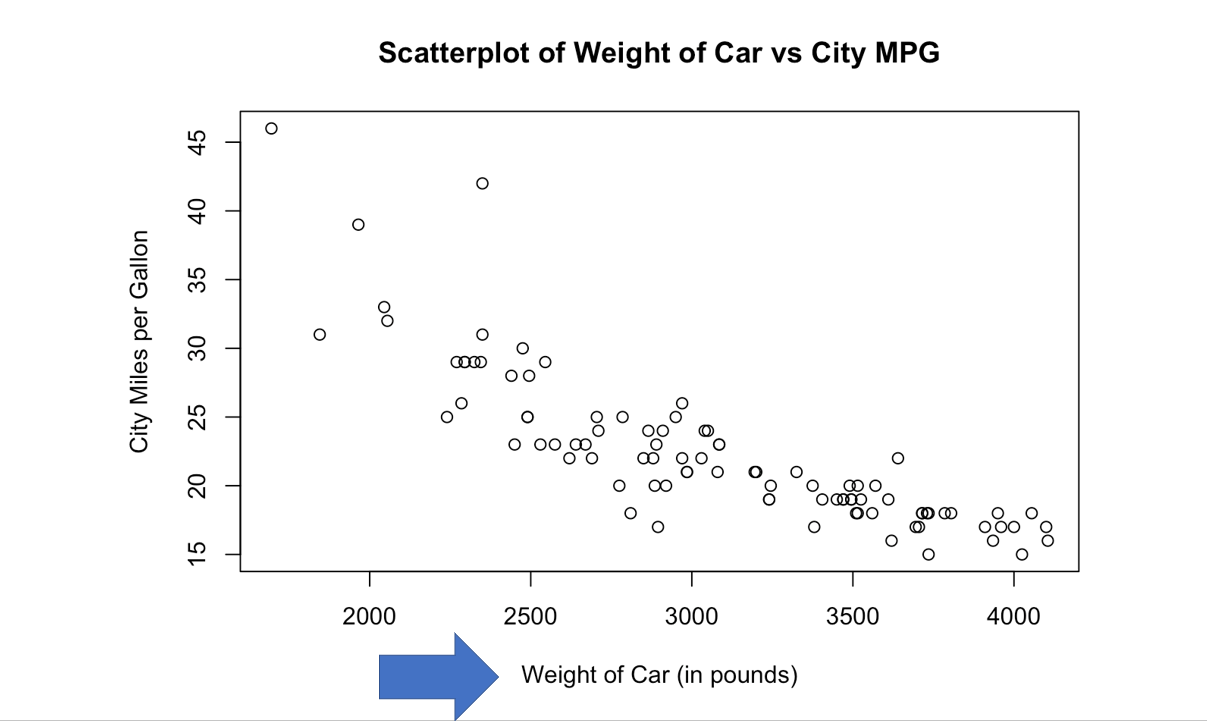Models
Lecture 16
Dr. Elijah Meyer + Konnie Huang
Duke University
STA 199 - Fall 2022
October 19, 2022
Checklist
– Clone ae-14
Announcements
– Project Proposal Due Thursday
Goals
– Introduce the idea of modeling
– Why we model?
– What a model is?
– Correlation
– Introduction to probability (maybe)
Warm up

– What is the relationship?
– What is your best guess for a car’s MPG that weighs 5000 pounds?
What is a statistical model?
– Statistical modeling is the process of applying statistical analysis to a data set.
– A statistical model is a mathematical representation of observed data.
Vocab - Response variable

Vocab - Explanatory variable

Correlation

Probability
Probability
A random process is one in which the outcome is unpredictable. We encounter random processes every day: will it rain today? how many minutes will pass until receiving your next text message? will the Packers win the Super Bowl?
The probability of an event is the long-run proportion of times the event would occur if the random process were repeated indefinitely (under identical conditions).
Types of Probabilities
– Single Event
– Conditional
– And
Notation
We will denote “events” by upper case letters near the beginning of the alphabet
– P(A)
– P(A|B)
– P(A U B)
Examples
We often calculate probabilities using a table. Consider the following example:
| Cured | Not-Cured | Totals | |
| New Drug | 145 | 250 | 395 |
| Standard Drug | 300 | 305 | 605 |
| 445 | 555 | 1,000 |
What is the probability of \(A\)?
What is the probability of \(B^c\)
What is the probability of \(B\) and \(A\)?
What is the probability of \(B\) given \(A\)?
Example
As a student at Duke University, suppose your first class on Mondays is in Old Chemistry at 8:00am and you commute to school. From past experience, you know that there is a 20% chance of finding an open parking spot in Lot 6. Otherwise, you have to park in Lot 18. If you find a spot in Lot 6, you only have a 5% chance of being late to class. However, if you have to park in Lot 18, you have a 15% chance of being late to class.
Step 1
“you know that there is a 20% chance of finding an open parking spot in Lot 6.”

Step 2
“if you park in Lot 6, the probability of being late to class is 5%; if you park in Log 18, the probability of being late to class is 15%.

Step 3
| Late to class | Not late to class | Totals | |
|---|---|---|---|
| Lot 6 | 10 | 190 | 200 |
| Lot 18 | 120 | 680 | 800 |
| 130 | 870 | 1,000 |
